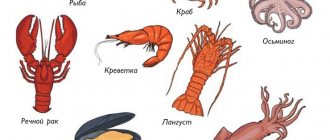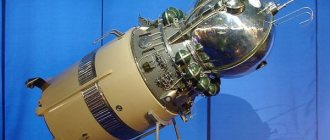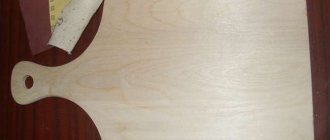Abstract of the GCD on FCCM in the preparatory group “Conversation about autumn”
The ears rose like arrows. A quiet rustle is heard:
Someone is sneaking through the forest. The bunny confuses his tracks
Runs away from trouble. He jumped to the side and turned around,
And curled up under a bush, like a little white ball,
So that no one could find it. (curls up into a ball)
Finger game “Wolf and Fox” A gray wolf runs through the forest and a fox runs after him.
They rose like a trumpet. Two fluffy tails.
Educator: September has gone, and after September came October - a gloomy, wet month. What is it called? (Falling leaves.) “In October there are seven weather conditions outside.” Why do they say this about October?
(October is a very capricious month. The weather can change several times during the day: either the sun is shining brightly, or the annoying rain is drizzling, or the first snowflakes are fluttering.)
Educator: All the signs of autumn were once noticed by people on the basis of constant observations of the life of nature. Let's remember folk signs.
Late leaf fall means a harsh, long winter.
A strong wind during rain foretells good weather in winter.
— Thunder in September foreshadows warm weather.
The web spreads over the plants - to the warmth.
The appearance of mosquitoes in late autumn means a mild winter.
Educator: If in September the birds are preparing to fly away, then in October they begin to fly away. Which birds fly away first?
Swifts and swallows, because they feed only on insects. With the onset of cold weather, insects become less and less
Educator: Which ones fly away a little later?
(Cranes, rooks and cuckoos fly away a little later, because they can willingly exchange their food for berries, fruits and grains.)
Educator: Which birds fly away last?
(The last to fly away are geese, ducks and swans, until the reservoirs freeze, they have enough food.)
Educator: What birds fly alone? (Cuckoo, falcon.) All birds fly away in different ways. How do cranes fly? (With a wedge). Ducks? (Straight front) Geese? (In a jamb).
Let’s say goodbye to them and say “thank you” to them for their beautiful and joyful songs, for protecting the trees from pests, for helping us dream of flying when rising into the sky.
Birds that fly to warmer climes, as we call them? (Migratory.)
Educator: Birds that winter with us? (Winterers.) People call them “winterers.” And we must take care of them. What is our concern? (We can make feeders and feed our feathered friends)
Educator: What do people do in October?
(Mushroom pickers wander through the forests in the hope that a late mushroom will be found. “If a late fungus appears, there will be a late snow.” People collect the remaining harvest from fields and vegetable gardens. Housewives chop and ferment cabbage in October. It’s not for nothing that people say: “September smelled like apples mi, and October - cabbage.")
Lesson summary in the preparatory group (familiarization with the surroundings)
I would like to bring to your attention a lesson summary that is more suitable for environmental education. I developed it when I worked in the preparatory group of a kindergarten. The lesson contains a lot of visual material. The children really enjoyed this activity. Speaking about the type of lesson, it is more suitable for the generalizing type, so it is better to conduct it around the end of autumn.
Topic of the lesson: “The sky was already breathing in autumn...”
Lesson objectives:
generalize and systematize children’s ideas about the characteristic signs of autumn, continue to teach them to find them on their own. Continue to teach children to establish connections between seasonal signs in nature and the way of life of plants.
Introduce the natural features of the autumn months. Develop the ability to explore objects of living and inanimate nature, establish connections, and draw conclusions. Cultivate a sense of empathy for native nature.
Continue to introduce children to Russian national culture. Cultivate a caring attitude towards toys.
Equipment needed for the lesson:
illustrations depicting Russian nature, reflecting the characteristic features of September, October, November; nature calendar; toy animal figures - hare, squirrel, bear, hedgehog, wolf.
Vocabulary work:
autumn, September, October, November, migratory birds, leaf fall.
Organization of children:
they sit on chairs in a semicircle; during physical education they stand in a circle.
Preliminary work:
maintaining a calendar of observations; observations on walks and excursions, acquaintance with children's fiction about autumn; viewing paintings by famous artists dedicated to autumn themes; drawing and making crafts on the theme “Autumn”.
Progress of the lesson:
Part
I. Educator: I invite you today to go on an unusual journey, which we will make during the autumn months. Aibolit also asked me to check if all the animals were prepared for winter. Aibolit is a special doctor, who does he treat? ( animals
).
Do you know what these doctors are called? ( veterinarians
).
Where do you think they work? ( in veterinary hospitals, in zoos, in the circus
).
So, Aibolit is very worried about the animals and asked us to check if all the animals are prepared for winter and for this we need to go to the autumn forest. But before we get there, we need to pass through three stations during the autumn months. You are ready? Then, let's go! ( you can turn on music with a song about a train
).
II
.
Educator: The first stop of our journey will be “September”. It is popularly called “gloomy”. Why do you think? ( because in September it is no longer as warm as in summer; the sky is often covered with clouds, becomes heavier, frowns; it rains
).
Educator: Due to the frequent winds, September is called “howler”. This month is also called “golden flower” and “deciduous month”. Why do you think? ( because in September the leaves turn yellow and the forest stands like gold, and then the leaves begin to fall, forming leaf fall
).
Educator: Look at our observation calendar. What will we call September, which was this year? ( howler, frown
).
Why? Tell us what makes us happy in September? ( September pleases us with fruits in the garden, in the vegetable garden, in the field, in the forest
).
They say: “September hurries the birds on their way.” Explain this proverb ( September is the first month of autumn, it begins to get colder, the days become shorter, and birds begin to flock to warmer climes
).
Educator: What birds fly away from us? ( swallows, starlings, rooks, cranes, etc.
).
Physical education minute
.
In September, the leaves are already starting to fall, let's get up and spin around like leaves. Children to the music of “Seasons” by P.I. Tchaikovsky twirls improvisedly. Then they take their seats.
Educator: The next stop on our journey will be “October” ( the teacher shows the children a reproduction of the painting “October” by I.I. Levitan
).
Educator: People called this month “wet tail”, “wind blower”, “dirty”. Why do you think? ( Because in October it rains more often, strong winds blow, and the street is slushy and dirty
).
Educator: Look at the observation calendar for the weather in October. How would we call the past October: “wettail”, “wind blower” or “muddy”? Why? ( The teacher listens to the children’s answers
).
Physical education minute.
In October, strong - strong winds blow. Let's imagine that we are trees (children raise their hands up, depicting tree branches). A light breeze blew (the children shake their hands slightly). The wind began to intensify, it blows stronger and stronger (the children sway, increasing the amplitude). The wind has turned into a hurricane, it bends the trees to the ground (children bend down to the floor). But now the wind subsides, subsides (children reduce the range of movements) and completely subsides. After the game, the children sit down in their places.
Educator: The next and last stop on our unusual journey will be “November”. November is the last month of autumn. What month is it now? (november). Let's try to describe the November weather. ( Children talk about the weather in November
).
Educator: People called November “half-winter road,” why do you think? ( Because winter has not yet arrived, but its first signs are already appearing, for example, snow is falling
).
Educator: In ancient times they used to say about that month “ice smith”. Who's to say why? ( ice appears on rivers, puddles, lakes are covered with ice
).
Educator: If you find yourself on the shore of a reservoir when the first ice appears on the water, under no circumstances should you step on it! It is very dangerous! The ice is still not strong and may break!
Educator: At this time, birds move closer to people. Who knows which ones? ( finches, tits
). They say about bullfinches: “the bullfinches have arrived - they brought winter on their wings!” This bird appears when the snow, which has fallen not for the first time, has not melted. In general, bullfinches live in dense coniferous forests, but with the onset of cold weather they move closer to humans. In city parks there are rowan, viburnum, and tree seeds for them.
Physical education minute.
The first snow already falls in November, let's spin around like snowflakes. Children do falls to waltz music.
III
.
Educator: Now, let's look into the forest and check how the animals have prepared for winter.
Toys depicting forest animals are placed on the carpet. Children choose a toy and each write a story about their own animal.
Educator: We got some interesting stories, I think that Aibolit will be glad that we helped him so well. And our journey has come to an end, and we are going for a walk!


